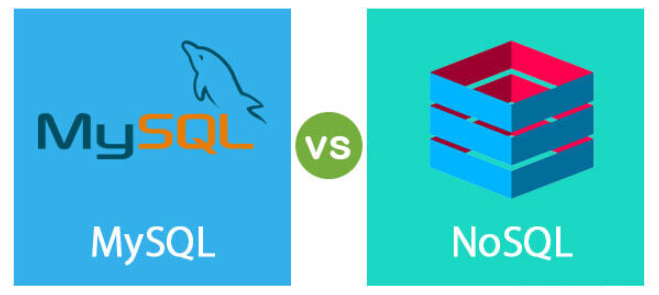
MySQL vs NoSQL
MySQL vs NoSQL
The MySQL database management system is a product from the Microsoft Corporation and is used as a part of their SQL database management system. On the other hand, NoSQL is a database type in which SQL is used to access the document-based contents of the non-relational database management systems. In order for a MySQL relational database to be effective, it is essential to structure and standardize the database. NoSQL, on the other hand, allows the user to locate and operate unformatted and non-related data in accordance with the user’s requirements and anywhere in the database that they desire.
MySQL:
- The MySQL development project makes its source code available under the GNU General Public License, as well as under proprietary agreements. MySQL was originally owned and sponsored by MySQL AB, which has since been acquired by Oracle Corporation.
- In MySQL, all data is stored in different tables and relationships are established using primary keys or foreign keys.
- A relational database like MySQL is easy to use and fast, making it a popular choice for both big corporations and small businesses. There are a variety of reasons why relational databases like MySQL have become so popular over the years. In its own right, it is a powerful program, as it is able to perform most of the functionality of some of the most powerful and expensive database packages on the market.
- The standard form of language being used is a well-known data language that is called SQL for MySQL databases. In addition to that, it can work on a wide range of operating systems and with many languages such as C++, PHP, Java, C, and many others. A key advantage of MySQL is that it is highly customizable due to the open-source GPL license that allows programmers to modify the MySQL software in order to suit their own specific environment.
NoSQL
- The data structure used by a NoSQL database differs greatly from that used by a relational database. It is faster to perform some operations in NoSQL than in relational databases like MySQL. There is also the option of viewing NoSQL databases’ data structures as more flexible and scalable than their relational counterparts, thanks to their data structures.
- This different data structure could be driven in part by the simplicity of the design, the simplicity of horizontal scaling to clusters of machines, and the control that can be exercised over the availability of the data.
- It is primarily used in real-time web applications and big data that NoSQL databases use. During the early part of the twenty-first century, these types of databases gained an increase in popularity. Among the primary reasons for this sudden surge can be attributed to companies such as Facebook, Amazon, and Google as being the cause of this sudden increase.
- In most NoSQL databases, changes to the database are propagated to all nodes within milliseconds, so queries might not return updated data immediately, which is known as stale reads. NoSQL databases revolve around the concept of “documents”.
- In document-oriented databases, there is a wide variety of definitions, but they all assume that documents encapsulate and encode data in some standard formats.
- In the database, each document is referred to by a unique key that represents the document in the database. Additionally to the key lookup performed by a key-value store, the database also offers APIs or a query language that enables users to retrieve the documents based on their contents, in addition to the key lookup performed by a key-value store.
Share:



